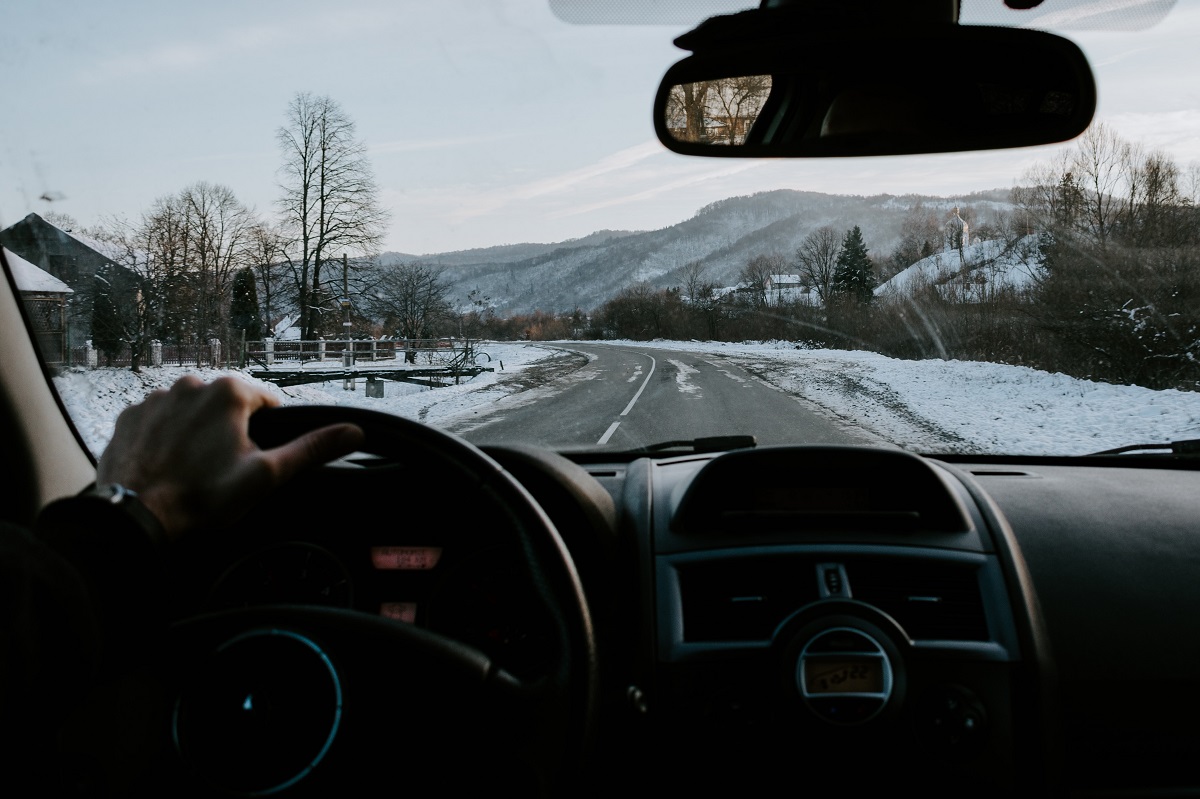Traveling Over The Festive Season? Here Are 12 Safety Tips For Disabled Drivers

What precautions should be taken while driving during the holidays? How do you prepare for winter driving? What are the most important holiday driving safety tips? These are important questions every driver needs to consider before traveling over the festive season.
Most holiday driving safety tips are obvious and should be familiar to all drivers. However, other considerations can often be overlooked. It is crucial that you follow good holiday travel safety advice when driving in December. Knowing how to drive safely on winter roads will mean you and your loved ones stay safe while traveling these holidays.
Driving on winter roads during the festive season is often hazardous. The weather is usually cold and snow and ice can make roads slippery. Disabled drivers need to take extra care when traveling by road over the holidays; if you have a disability, you may need to consider additional precautions, like packing extra safety equipment and medication.

Let’s dive into 12 important festive season safety tips for disabled drivers.
1. Make Sure Your Vehicle Has All Necessary Adaptations
Disabled driver vehicle adaptations come in many forms, all of which make it possible for people with disabilities to drive their own vehicle safely and comfortably. When you are driving this festive season, make sure that your vehicle is kitted out with any and all of the vehicle adaptations that you need.
Some of the most popular vehicle adaptations for disabled drivers are:
- Hand controls
- Pedal and steering wheel extensions
- Wheelchair lifts and ramps
- Transfer seats
- Reduced effort braking systems
- Left foot accelerators
2. Make Sure Your Vehicle Is In Tip-Top Condition
Before you travel, make sure your vehicle is in perfect condition. Check that:
- All lights are working
- Tires are in good condition and fully pumped up
- Fluid levels are where they should be
- There are no leaks under the vehicle
- Wipers are working
- Warning lights are working
- Your car battery is healthy
3. Know What Traffic Conditions Will Be Like On Your Journey
Take traffic conditions into account when planning your journey. If you can travel during periods when roads are less busy, and less treacherous, try to do so. It will make your journey quicker and safer.
4. Keep Informed About The Weather
Make sure to keep up to date on weather conditions on your route. Ice, snow, wind, rain, hail, and storms can all make driving more dangerous. Try to avoid traveling during extreme weather conditions.
5. Pack Any Medication You May Need
Always remember to pack any medication you may need on your journey. It is a good idea to bring more medication than you intend to take in case you get delayed or stranded. Make sure there is easy-to-see identification on your medication, as well as any allergies advice, in case you get involved in an accident and are unable to communicate with first responders.
6. Have All Necessary Safety Equipment In Your Vehicle
You should have all of the following safety equipment with you in your vehicle when you travel:
- First aid kit
- Drinking water
- Spare medication
- Cell phone and car mobile phone charger
- Warm clothes and blankets
- Flashlight and batteries
- Reflective triangles and a reflective vest
- Spare tire, tripod jack, wheel wrench
- Tool kit
- Jumper cables
- Fire extinguisher
- Duct tape
- Snow shovel, snow brush, cat litter for traction
- Windshield washer fluid
7. Stay COVID-Safe
During the COVID-19 pandemic, it is very important to stay COVID-safe, particularly throughout the holidays. This may mean bringing additional hygiene and safety products with you when you travel this festive season. At a minimum, make sure you have the following:
- Face masks and/or face shields
- Hand sanitizer
- Rubber gloves

8. Practice Defensive Driving
Always drive like your life depends on it… because it does. Some of the most important core tenets of safe defensive driving are:
- Have SAFETY as a first priority.
- Stay aware of your surroundings.
- Don’t rely on good driving from other road users.
- Maintain a safe distance from the vehicle in front of you.
- Drive within the speed limit.
9. Avoid Distractions While Driving
This should be a no-brainer. But unfortunately, it is still all too common to see people not paying proper attention when driving. Using a mobile device, playing with the stereo system, chatting to other people in the vehicle… It is easy to get distracted when driving, especially when on a long journey. But it’s vital to avoid distractions, because it only takes a split second to lose control of your vehicle.
10. Stay Alert And Wide Awake While Driving
When driving on long journeys, it is easy to get sleepy. But drowsy driving is extremely dangerous. Make sure you are wide awake and alert while driving. If you feel even remotely sleepy, pull over and rest, get some fresh air, or get a coffee. Do whatever you need to do to stay wide awake while driving.
11. Never Drive Under The Influence
This one should also be completely obvious, but it is so important that it needs to be said: NEVER drive under the influence of alcohol or drugs. This includes any legal drugs or medications that may make you drowsy or compromise your ability to be fully alert and capable of driving safely.
12. Don’t Forget Your Disabled Parking Placard
Finally, always remember to bring your disabled parking placard with you when you travel. Disabled parking permits from all US states are valid in every other US state (as well as several other countries, including Mexico, Canada, the UK, and the EU). So wherever you’re traveling this festive season, you will most likely be able to use your disabled parking placard when you’re there.
Featured image by Taras Zaluzhnyi on Unsplash